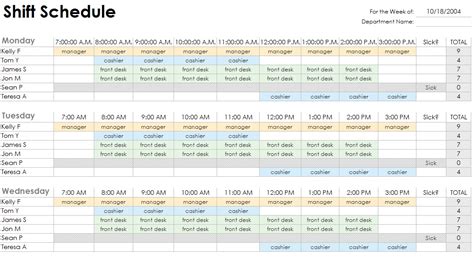Create Your Schedule Today

Creating a schedule is an essential aspect of effective time management, allowing individuals to prioritize tasks, set realistic goals, and make the most out of their time. With the ever-increasing demands of work, personal life, and other responsibilities, having a well-structured schedule can be the difference between productivity and chaos. In this article, we will explore the importance of scheduling, provide tips on how to create an effective schedule, and discuss various scheduling techniques that cater to different lifestyles and preferences.
Understanding the Importance of Scheduling

Scheduling is not just about allocating time slots for tasks; it’s about creating a framework that supports your goals, well-being, and personal growth. A good schedule helps in reducing stress, improving work-life balance, and enhancing overall productivity. It allows you to focus on high-priority tasks, manage deadlines, and make time for leisure activities, ensuring that you lead a balanced and fulfilling life.
Key Points
- Effective scheduling improves time management and productivity.
- A well-structured schedule reduces stress and improves work-life balance.
- It helps in prioritizing tasks and managing deadlines efficiently.
- Scheduling allows for personal growth and makes time for leisure activities.
- There are various scheduling techniques to suit different lifestyles and preferences.
Steps to Create Your Schedule Today
Creating a schedule that works for you involves several steps, starting from identifying your goals and priorities, tracking how you spend your time, and then allocating time slots for different activities. Here are some steps to guide you through the process:
- Identify Your Goals and Priorities: Start by listing down your short-term and long-term goals. This will help you understand what needs to be prioritized in your schedule.
- Track Your Time: For a week or two, keep a time log to understand how you currently spend your time. This will help in identifying time-wasting activities and areas for improvement.
- Choose a Scheduling Tool: Decide on a scheduling tool that works best for you, such as a planner, a mobile app, or a digital calendar.
- Allocate Time Slots: Based on your goals, priorities, and time log, start allocating specific time slots for work, study, personal activities, and leisure.
- Be Flexible: Remember, your schedule should be a guide, not a dictator. Leave some room for flexibility and adjustments as needed.
| Activity | Time Allocation |
|---|---|
| Work/Study | 8 hours |
| Personal Development | 1 hour |
| Leisure/Relaxation | 2 hours |
| Sleep | 7-8 hours |

Advanced Scheduling Techniques

Beyond the basic steps of creating a schedule, there are several advanced techniques that can help in optimizing your time management. These include the Pomodoro Technique, time blocking, and the Eisenhower Matrix. Each of these techniques offers a unique approach to managing time, focusing on work intervals, prioritization, and task categorization.
The Pomodoro Technique
The Pomodoro Technique involves working in focused, 25-minute increments, followed by a 5-minute break. After four cycles, you take a longer break of 15-30 minutes. This technique can help in maintaining focus, reducing distractions, and improving overall productivity.
Time Blocking
Time blocking is a scheduling method where you divide your day into large blocks of uninterrupted time, usually 90-120 minutes, dedicated to a single task or a group of related tasks. This approach helps in minimizing switching costs, maximizing concentration, and achieving more in less time.
The Eisenhower Matrix
The Eisenhower Matrix is a decision-making tool that helps in prioritizing tasks based on their urgency and importance. It categorizes tasks into four quadrants: urgent & important, important but not urgent, urgent but not important, and not urgent or important. This matrix is invaluable in scheduling, as it ensures that you focus on tasks that truly matter and can have a significant impact on your goals.
What is the best scheduling technique for beginners?
+The best technique for beginners is often the simplest one. Starting with a basic planner or calendar and allocating time slots for different activities can be a good starting point. As you become more comfortable with scheduling, you can explore more advanced techniques like the Pomodoro Technique or time blocking.
How often should I review and adjust my schedule?
+It's a good practice to review your schedule at least once a week, making adjustments as needed. This ensures that your schedule remains aligned with your changing priorities and goals. Additionally, consider doing a more thorough review every month or quarter to reflect on your progress and plan for the future.
Can I use multiple scheduling techniques at once?
+Yes, you can definitely combine different scheduling techniques to create a system that works best for you. For example, you might use time blocking for your work hours and the Pomodoro Technique for study sessions or personal projects. The key is to experiment and find the combination that enhances your productivity and fits your lifestyle.
Creating your schedule today is the first step towards a more organized, productive, and balanced life. By understanding the importance of scheduling, following the steps to create an effective schedule, and exploring advanced scheduling techniques, you can take control of your time and achieve your goals. Remember, scheduling is a personal and iterative process, and it may take some time to find the perfect balance that works for you. With patience, flexibility, and a willingness to adapt, you can master the art of scheduling and unlock your full potential.



